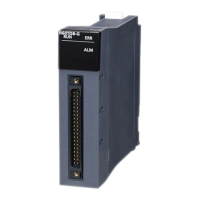32 CONSTANTS
32.5 Notation of Constants
529
32
Notation of time
In the notation of time, add "T#" or "TIME#" at the beginning of the value specified in units of time; d (day), h (hour), m
(minute), s (second), and ms (millisecond). The following table lists the effective range for each unit of time.
Special character (escape sequence)
"$" is used as an escape sequence in a string. The following characters can be input as escape sequences with "$".
If the two hexadecimal digits following "$" do not correspond to the ASCII code, a conversion error occurs.
Item Effective range
d (day) 0 to 24
h (hour) 0 to 23
m (minute) 0 to 59
s (second) 0 to 59
ms (millisecond) 0 to 999
• Each unit of time can be omitted sequentially from the beginning to the end or in reverse order.
T#31m23s, T#31m0s648ms
• A sign can be added only before the first unit of time.
T#-31m23s
• An unsigned real decimal number with a decimal point can be used for the last unit of time. The values after the decimal point of ms (millisecond) are rounded
down.
T#-24d20h31m23s648.123ms (The time is treated as T#-24d20h31m23s648ms.)
T#1.2345ms (The time is treated as T#1ms.)
• Only for the first unit of time other than d, the following values within the effective range can be input.
h: 0 to 596
m: 0 to 35791
s: 0 to 2147483
ms: 0 to 2147483647
Symbol used in a string or printer code Escape sequence
$ $$
' $'
" $"
Line feed $L or $l
Line break $N or $n
Page feed $P or $p
Return $R or $r
Tab $T or $t
Two hexadecimal digits and characters that correspond to the ASCII code Two hexadecimal digits following $

